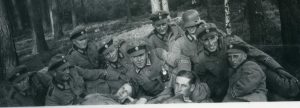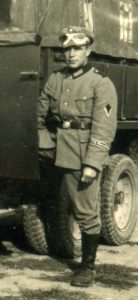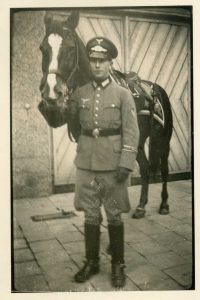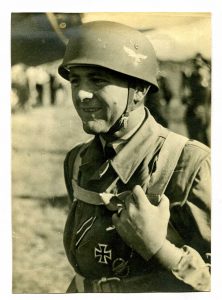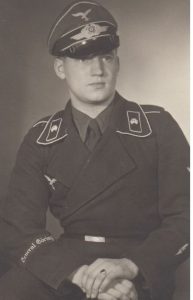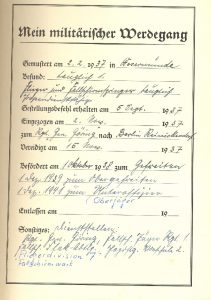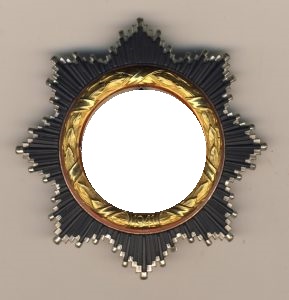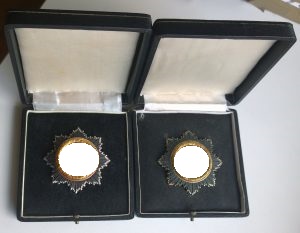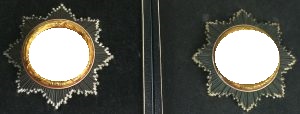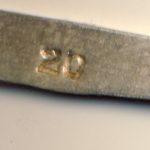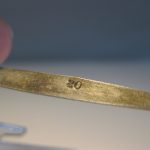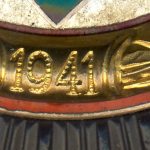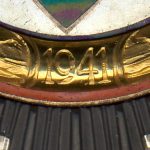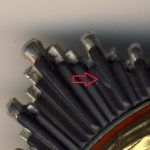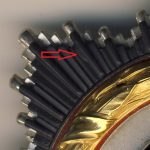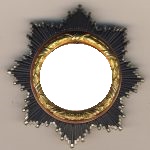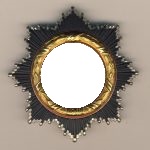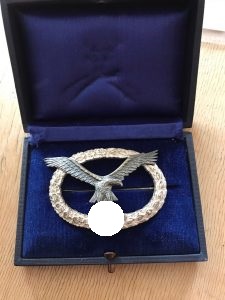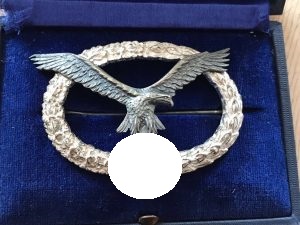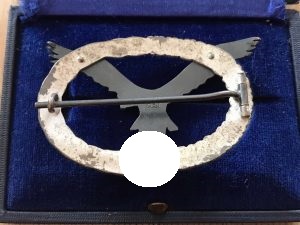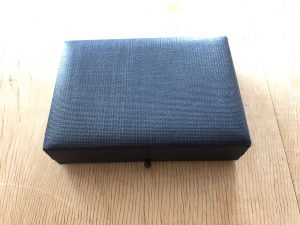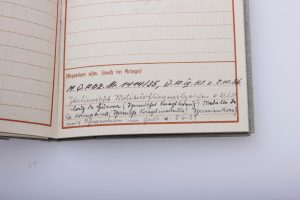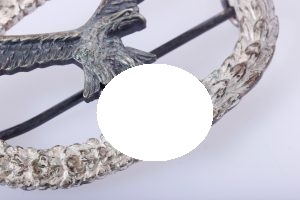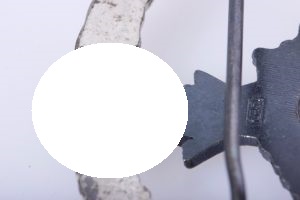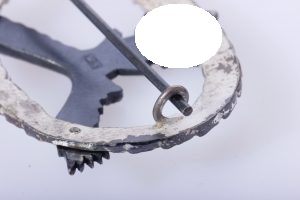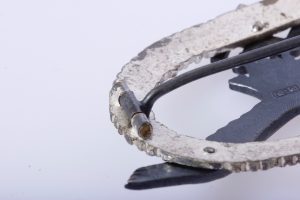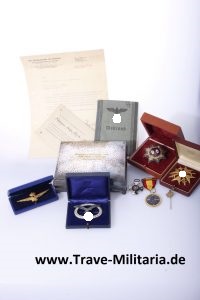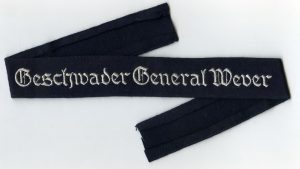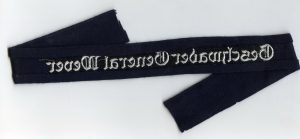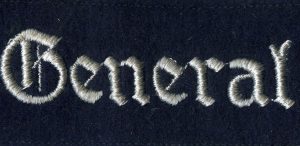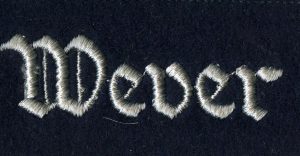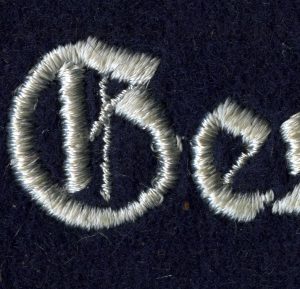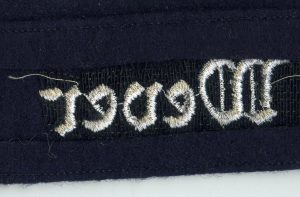Hi gents, almost time to go back to our mace of good or bad high end shields of World War II.
I did the Cholm shield part one and got a lot of feedback from collectors with thumbs up and more good information. What I liked the most was the question if I can do a part two with the cupal example and the zinc version….I will do that but it takes some time.
By the way I would like to know if there are hobby writers among you guys. I would love to make this blog bigger with more articles but my time is endless. So if you like to do something on a special badge of World War II or something similar…..just contact me and we work it out. If you are from Germany don’t be afraid, if you write in german I can translate it for you 😉
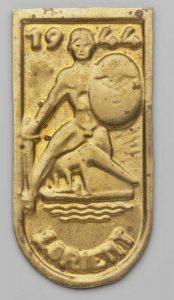
However back to our riddle of rare shields. Today I like to bring you some information on the Lorient shield and what happened there.
And (I think you already knew it) I have been to Lorient in the early 90´s and was impressed about the big Bunker`s which were build there during the war. Huge monsters made from concrete and steel to protect the German submarine from air raids until 1945 on the Atlantic coast. Lorient was the home base of the 10th. U-Flottilla (Unterseebootflottille). I was lucky to get a picture of the cap badge which Uboat crew member used to wear on their oversea cap (Schiffchen).
Here some background to the area of Lorient and historical facts:
Lorient, on the Bay of Biscay, had been an important French naval base until June 1940. With the capture of the base in the same month by German troops (see France campaign), the town in succession got more and more of strategic importance for the German Navy.
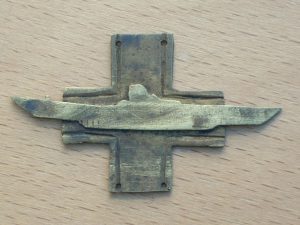
This concerned above all the submarine construction with its bunker buildings on the peninsula Kéroman.

In August / September 1944, following the Allied invasion of Normandy, the port and town of Lorient were completely enclosed by US and British forces, with some 22,000 German soldiers. Adolf Hitler thereupon declared the city a fortress. During the eight-month siege, which ended with the surrender of the remaining German forces on May 10th, 1945, there were some fighting going on.
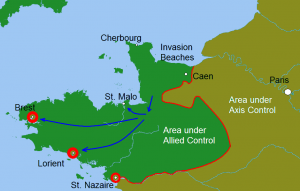
Fortress Lorient was not Lorient only, but also Groix Island, Etel River, the coast between Lorient and Port Navalo, Quiberon peninsula, Belle-Ile island, and had connection with the Saint Nazaire pocket.
So finally a big area to defend with lots of artillery, bunkers and trenches around the main part of Lorient.
To get a better view on the fighting during that time, we jump in after the D-Day to August 9th ,1944. The 4th US Armored Division reached the large-scale German defense area around Lorient, which was surrounded as an important submarine base by a ring of anti-aircraft guns and artillery. In Saint-Gilles fierce fighting broke out around a bridge, which was one of the few accesses to Lorient.
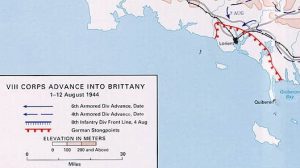
A volunteer Belarussian cavalry brigade had been stationed by the Germans in defense of the American advance in this place. After a short battle, the streets were covered in blood in the rain of the wounded or dead horses and soldiers. Further towards the village core, Belorussians had positioned themselves on the houses and in turn began firing at the invading US tanks.
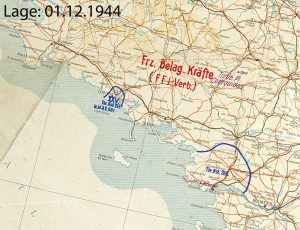
The tanks and other vehicles succeeded after some time the breakthrough to the bridge and its crossing. At nightfall, the Allies succeeded in positioning artillery at Caudan, about three kilometers north of Lorient. After brief bombardment of the opposing positions in Lorient, the Americans gave the Germans an ultimatum to the task, which was rejected. Since a further procedure would have been possible only with significantly increased artillery, the division leadership decided a partial retreat to the area of Vannes, about 60 kilometers southeast of Lorient. Only a smaller siege group was left behind.
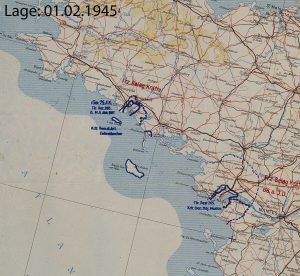
Task Force B of the 6th US Armored Division advanced 180 miles from Brest to Vannes on 14 August to replace the units of the 4th US Armored Division north and east of the city. On the way there they encountered no German resistance. Around noon, a reserve command advanced to Lorient to support the remaining group of the 4th US Armored Division. On August 15, the entire 6th US Armored Division arrived at Lorient. The front line enclosed the fortress Lorient and the Quiberon peninsula in the east as well as patrols from Redon in the east to the area to the Daoulas peninsula in the west.
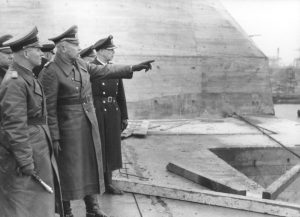
After Vannes was taken and the wider area was controlled by the French resistance, the 6th US Armored Division focused on the area around Lorient. The city itself was too heavily fortified to have a promising attack there. The German defenders, who are from parts of the XXV. Army Corps under the Commander-in-Chief for Brittany, General Wilhelm Fahrmbacher, as well as remnants of the 265th Infantry Division under Lieutenant General Hans Junck, who was in the fortress Saint-Nazaire, and Rear Admiral Otto Kähler, since February 1944 Commander of the Naval Defense of Brittany [NB Kähler, however, had become a prisoner of war on September 18, 1944 in Brest], passed, had in return no chance of counterattacking, and was also bound by Hitler’s order to keep the port cities to the last.
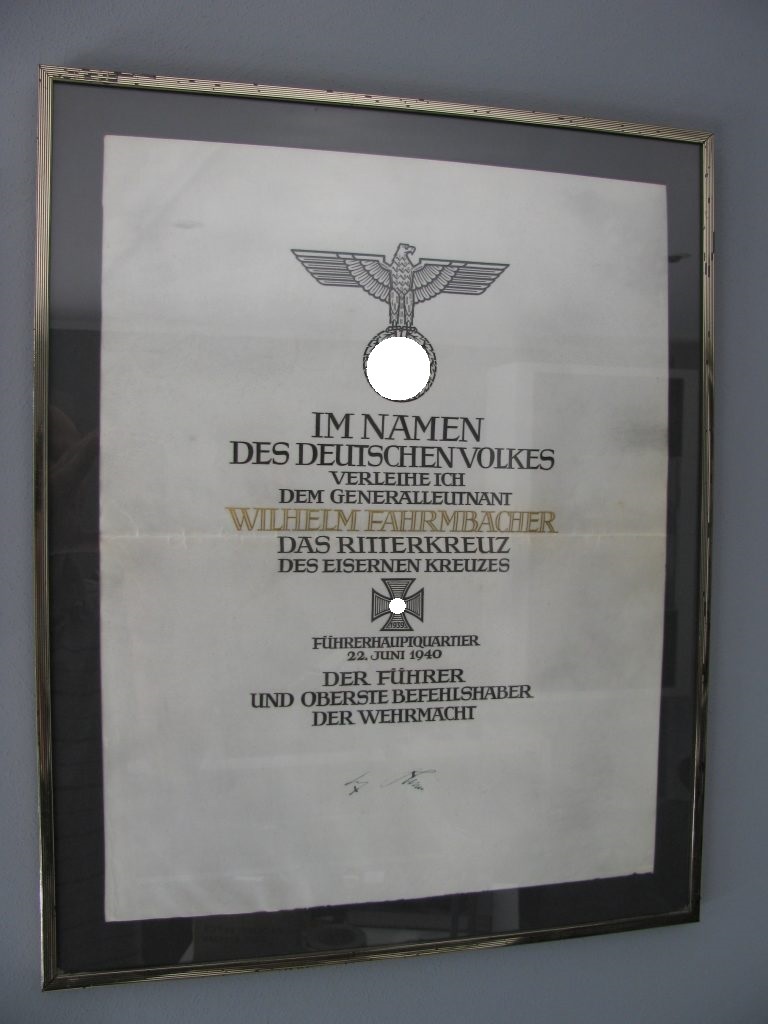
So both sides confined themselves to intensive patrols and artillery fire. The Americans had set up twelve observation posts around Lorient, from which reconnaissance units were sent to scout the German artillery positions. In addition, work began on mining the entire front line with booby traps. In some cases German patrols could be captured. But also Americans came during a small skirmish between reconnaissance patrols in German captivity.
The 6th US Armored Division was replaced on September 10 by the 94th US Infantry Division, which continued the siege, and moved east to the 3rd US Army. On 17 November, a brief ceasefire was agreed for the purpose of mutual exchange of prisoners. General Wilhelm Fahrmbacher capitulated on May 10, 1945,
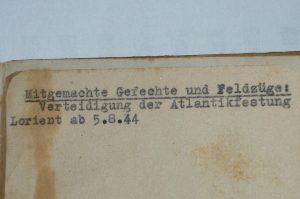
Both the Lorient and St.Nazaire pockets contained about 53000 German troops at the time of surrender. The Lorient pocket alone had over 25000 German troops.
These forces surrendered to the US 66th Infantry Division with a number of attached French units.
—-
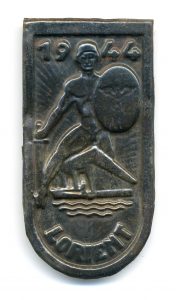
During the siege of Lorient the idea to make a remberence shield was born by some of the officers. The artistic design of the shield goes back to the head of the shipbuilding workshops of the submarine base “Marine Baurat” K. Fehrenberg. They asked General Fahrmbacher (Wilhelm Fahrmbacher (19 September 1888 – 27 April 1970) was a General in the Wehrmacht of Nazi Germany during World War II who commanded several corps. He was a recipient of the Knight’s Cross of the Iron Cross. Upon Germany’s surrender in 1945, General Fahrmbacher was interned in France until 1950.
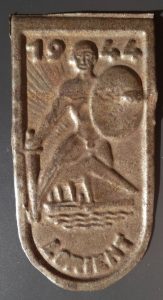
After his release he served as a military advisor in Egypt) and he approved the idea. With little corrections (a German eagle with a swastika on the soldiers shield) the shield was approved and the production began by using different materials due to the supply problems during the siege of Lorient.
The final shield itself shows in its upper end the year 1944 as well as on the lower side the lettering LORIENT. In the center, a naked Wehrmacht soldier was stylized with a steel helmet attached, holding a sword in his right hand and a shield (symbol of defense) in his left hand.
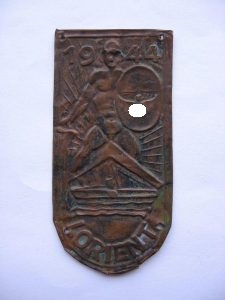
It is not exactly known if all Lorient shields have the Wehrmacht eagle on the soldiers shield, there are information about some shields with a Luftwaffen eagle on the soldiers shield (not proven until today). The unusual idea of representing a naked soldier presumably goes back to the idea of the creator, who wanted to use this symbolism to vividly portray „bare survival“. Also the evidence for this theory is missing. Behind the symbol of the soldier were represented the rays of the rising sun, which are regarded as a symbol of hope.
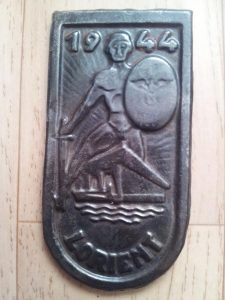
Finally, under the soldier a submarine is shown, which can be seen in front of a submarine bunker (on the Keroman Island) on waves in ride. Since it was not possible to supply the garrison on land, from the air or to water, it was decided to use the existing sheet metal stocks, u. a. from scrap, to resort. For the production one used copper, brass, aluminum and even steel. Higher officers received a chromed version of copper. Of course, the use of different metals also resulted in different colors. Through the use of several „punching presses“ and templates, the appearance of the sign differed significantly from machine to machine, so that there was no question of a uniform pattern embossing.
Accurate and reliable award numbers cannot be quantified. It is assumed that after all sheet metal stocks were used up in November 1944, about 10,000 – 12,000 shields were pressed. These were then issued at Christmas 1944 to deserving soldiers of the occupation. Thus, about every second garrison received the Lorient shield.







The Lorient shield is not a combat badge of the Wehrmacht like the Cholm shield, as neither its foundation nor the ceremony were officially. The shield was therefore regarded only as a „traditional badge“. With the entry in the “Soldbuch” also no claim to official acceptance of the shield by the Federal Ministry of the Interior. Therefore, this shield has not been included in the Law on Titles, Orders and Decorations of 26 July 1957.
Original Lorient Shields










After all these good information’s from collector friends, books, archives and databases I come to the following conclusion about Lorient shields.
There are some originals out there, but they are very hard to find. If it is true and they made 12.000 of them, what happened to the soldiers of Lorient during the surrender. Most of their personal things were taken by the allied soldiers as a souvenir. Maybe a few got their badges home from their POW time. I you look on the originals, you see them made of different materials. Some shields with prongs, some shields with holes to sew it to the uniform and some shields without anything of that. Originals are not made with a lot of details and they are not solid. You can always see that they were “pressed” in a certain way. Some have a fabric backing, but in my opinion that was made so you cannot see the backside and buy it as an original shield from the time period. In this high price area you have to be sure that you buy an original. Better to spend more money on it and buy at a dealer with a “give back guarantee”. Even if you buy directly from the family, there is no proof that the vet didn`t buy it in the early 50`s or 60`s. To be really sure you should use one of the bigger forums like GCA or WAF with all the experts there. They will know it for sure.
Copys of Lorient Shields













Big “thank you” to all collectors who helped me bring this information to you. There are Pascal, Patrick, Luc, Christian, Uwe, Holger, Jens and some guys who like to stay in the shadow.
Subscribe for more and get an email every time a new article goes online !
Best
Sascha
Copyright 2018 : Alle Rechte bei dem Verfasser Sascha Ulderup / All rights with the author Sascha Ulderup

